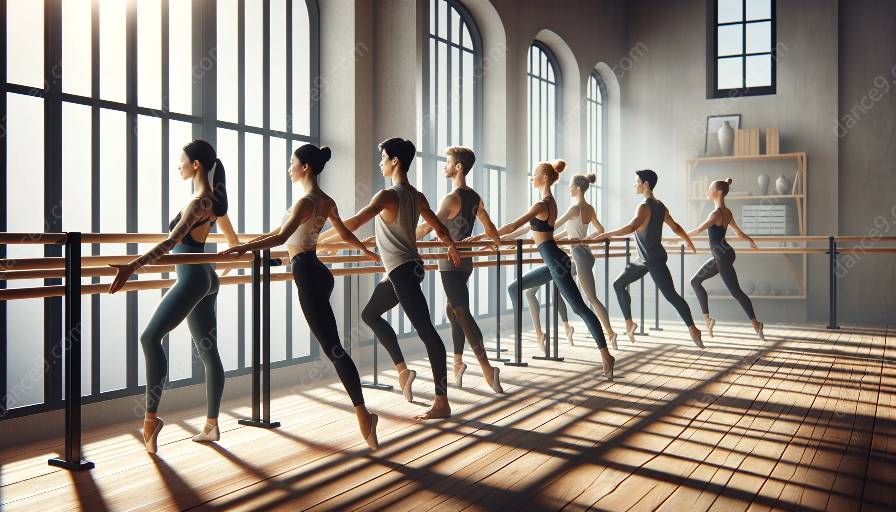Barre training has become a popular fitness regimen that offers numerous benefits for dancers looking to improve their balance and coordination. This form of exercise, inspired by ballet techniques, focuses on strengthening the core, enhancing flexibility, and refining muscle control. By incorporating barre training into their routine, dancers can experience remarkable improvements in their overall body awareness, stability, and grace.
The Benefits of Barre Training for Dancers
Barre exercises are specifically designed to target the muscle groups used in dance, such as the legs, core, and arms, while also placing emphasis on proper alignment and posture. This targeted approach helps dancers develop a strong and stable base, essential for performing intricate movements and maintaining control during dynamic choreography. Moreover, the use of the barre as a prop allows dancers to engage in low-impact movements that help build endurance and muscle strength without placing excessive strain on the joints, making it an ideal cross-training method for dancers.
Another key benefit of barre training is the focus on isometric contractions, which involves holding specific positions to strengthen the targeted muscles. This isometric training is particularly effective for improving stability and balance, as it challenges the body to maintain control and alignment while engaging in sustained muscle contractions. As dancers progress in their barre practice, they develop a heightened sense of proprioception, or the body's awareness of its position in space, leading to improved balance and coordination both on and off the dance floor.
Techniques for Enhancing Balance and Coordination Through Barre Training
Barre exercises incorporate a variety of movements that are beneficial for enhancing balance and coordination. One technique commonly used in barre training is the utilization of small, controlled movements that target specific muscle groups. These precise movements, often accompanied by pulsing or holding positions, help dancers strengthen and sculpt their muscles while honing their ability to maintain balance and stability.
Furthermore, barre training frequently incorporates elements of balance challenges, requiring dancers to perform exercises on one leg or in positions that demand heightened proprioceptive control. By engaging in these challenging movements, dancers can improve their ability to stabilize and control their bodies, ultimately enhancing their balance and coordination. For instance, exercises that involve standing on relevé (the balls of the feet) or executing leg extensions while maintaining a strong core and steady posture can significantly enhance a dancer's ability to execute movements with precision and control.
Barre training also emphasizes the importance of proper body alignment and posture, which are fundamental for maintaining balance and coordination. Through consistent practice, dancers develop a heightened awareness of their alignment and learn to engage the core and stabilizing muscles effectively, leading to improved posture and equilibrium in their dance performances.
Incorporating Barre Training into Dance Classes
Many dance studios and fitness facilities now offer specialized barre classes tailored to dancers seeking to enhance their techniques. These classes provide a structured environment where dancers can benefit from expert-guided barre exercises specifically designed to improve balance and coordination. By incorporating barre training into their regular dance practice, dancers can supplement their training regimen with targeted exercises that directly translate to enhanced performance on stage.
Additionally, dancers can integrate barre exercises into their warm-up and cool-down routines to prepare their bodies for the physical demands of dance and aid in muscle recovery. By consistently incorporating barre training into their dance classes, dancers can experience ongoing improvements in their balance, coordination, and overall dance proficiency.
Conclusion
Barre training offers dancers a valuable opportunity to strengthen their bodies, refine their technique, and achieve greater balance and coordination. Through targeted movements, isometric contractions, and a focus on alignment, dancers can harness the benefits of barre training to elevate their performance and overall physical well-being. Whether through specialized barre classes or integrated into regular dance practice, barre training serves as a powerful tool for dancers looking to achieve a new level of grace, stability, and poise in their artistry.













































































